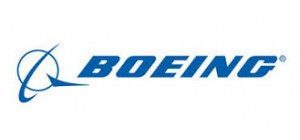
- Challenge: The facility generates a huge amount of trash, disparagingly referred to as Foreign Object Debris (F.O.D.), considered lethal to an aircraft.
- Solution: Client purchased approximately 50 RotoPac™ industrial waste compactors and placed them throughout the production area.
- Result: They are able to compact at a 10-1 ratio (customer’s figure) saving money and personnel needed to handle the volume of F.O.D. Under the current system, trash removal has gone from as much as six times a day to only once a day. The company’s move to the Rotary Arm Compactor, the RotoPac™ has enabled production workers to concentrate on the manufacturing process and not waste handling.
The RotoPac™ industrial waste compactor has a 4-ft. x 5-ft. footprint equal to one of the metal trash boxes it replaced. That meant a significance savings of valuable shop space as one plastic bag of compacted trash equaled 10 boxes. Client places great emphasis on employee safety and the introduction of the “at-the-source” compactor has virtually eliminated the risk of injuries created by the heavy metal carts. The RotoPac industrial waste compactor is a very safe and easy to use compactor, requiring minimal training and allows production personnel to work on assembling aircraft, not carting away trash.
With more than 12,000 employees, Boeing Wichita (now Spirit AeroSystems) is the region’s largest private employer with a campus that includes a large commercial aircraft manufacturing plant as well as an important modification and maintenance center for military aircraft. Not surprisingly, the facility generated a huge amount of trash, disparagingly referred to as Foreign Object Debris (F.O.D), considered lethal to an aircraft.
“F.O.D. was growing rapidly throughout our manufacturing plant,” said Tim, assembly line plant supervisor. “I think I became a constant caller to our Transportation Department because the current clean-up plan couldn’t keep up and the waste was overflowing. It threatened to compromise the integrity of our work.”
It was apparent that Boeing faced a multiplicity of challenges dealing with waste removal. Wheeled trash boxes or containers were located throughout the plant to capture debris. Because workers were focused on the movement of production parts and the efficiency of workflow, trash was sometimes the last thing to get moved. Overflowing containers were constantly being replaced by empty bins, which meant additional labor costs and valuable time lost. In addition, there was a constant need for repairs to the trash boxes and their casters.
“As a result of Tim’s calls, “explained Dale, workplace services transportation analyst, “we turned to the KenBay RotoPac, a small efficient and transportable waste compactor. By doing so, we eliminated a process that was labor intensive and time consuming and simply put, this saved us money. We also reduced our overhead costs in the purchase of plastic lids, steel boxes and castors by 70%.”
There are many reasons why they now have 33 KenBay RotoPacs on its campus. First, the RotoPac saved the company money. Because it is able to compact at a ten-to-one ratio, the RotoPac saves money on the personnel needed to handle the volume of F.O.D. Second, the compactor has reduced the frequency for handling trash removal. Under the current system, trash removal has gone from as much as six times a day to only once a day. The company’s move to the RotoPac has enabled production workers to concentrate on the manufacturing process and not waste handling. As an “at-the-source” trash compactor, the RotoPac has a 4ft. x 5ft. footprint equal to one of the metal trash boxes it replaced. That meant a significant savings of valuable shop space as one plastic bag of compacted trash equaled 10 boxes. Because of its small size, the RotoPac is highly portable, enabling personnel to move the compactor to the point of greatest need. The response to the KenBay compactors has been very favorable both in the commercial division and in the military division. “Overall, the KenBay compactor has been a great addition to the management of F.O.D. on the flight line” said Roger, manager, Transportation Military Division. “Our work involves modifying military aircraft and there is a lot of debris, which has the potential to compromise our very exacting production. I have six compactors located throughout our buildings and they keep our areas very clean.” Boeing places great emphasis on employee safety and the introduction of the “at-the-source” compactor has virtually eliminated the risk of injuries created by the heavy metal carts. The RotoPac is a very safe and easy to use compactor, requiring minimal training. There are signs on each machine reminding users of the safety requirements and the procedures implemented by Transportation have been very successful.
“Facing more competition that ever, we are constantly re-evaluating the way we do business,” said Dale. “ The introduction of the RotoPac and its savings in terms of space, labor and time, is just one small example of how we often say in the Transportation Department, our decisions aren’t rocket science, but what we do contributes to the business in an important way.” “ Our RotoPac may be dwarfed in size by the Boeing’s large manufacturing machines,” said Don Meis, president and CEO of KenBay, “but it is gratifying to know that the compactors are doing their part contributing to the high standards of excellence of the world’s largest aircraft company. In this case, small, efficient and portable makes a difference.”


